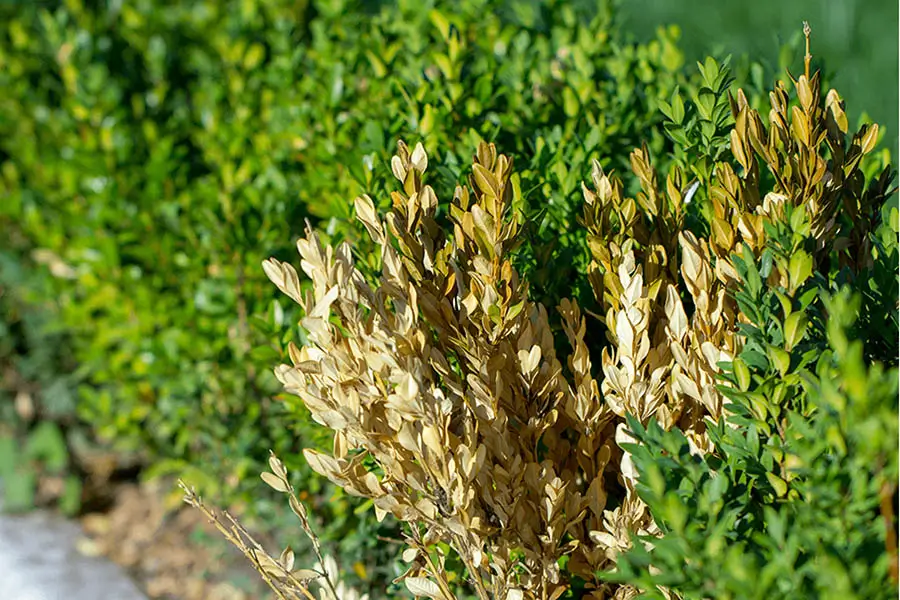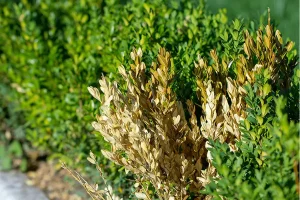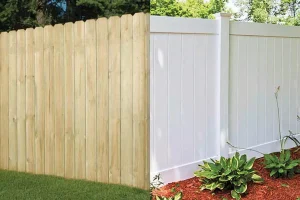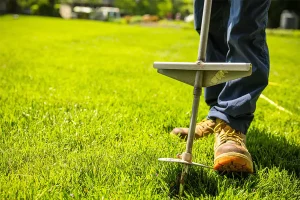Hey folks! We are from Stonebridge Lawn & Garden, and after 25 years of experience helping Carrollton lawns and landscapes look their best, we’ve seen just about everything—shrubs with spots, wilting leaves, mystery mold—you name it.
As lawn service contractors in McKinney, we often come across similar issues in nearby neighborhoods. We just did a shrub treatment last week for a client off Old Denton Road, and it reminded me how many people ask this same question: “When should I treat my shrubs for disease?”
It’s a great question, and getting the timing right can make all the difference between a healthy lawn and a yard full of struggling plants. So, let’s talk about the best time for shrub disease treatment, what to look for, and how regular lawn care services in Carrollton, TX, can keep everything growing strong.
What Causes Shrub Diseases in Carrollton, TX?
Here in Carrollton, TX, the weather swings from hot, humid summers to chilly winters. That kind of climate can stress out shrubs and create perfect conditions for diseases to spread.
Too much moisture. When water sits on leaves for too long, fungi and bacteria move in fast.
Poor air flow. Shrubs planted too close together don’t get enough breeze, which traps humidity.
Overwatering or underwatering. Both weaken your plants, making them easy targets for disease.
Old mulch buildup. Layers of old mulch hold moisture and can hide fungal spores.
I recently worked with Sarah Thompson, a client in McKinney, TX, on her property on Maplewood Drive. She noticed her shrubs weren’t thriving and seemed sickly. Upon inspection, I found that the hot summers and chilly winters had stressed the plants, creating perfect conditions for disease.
The shrubs were planted too closely, trapping humidity, and overwatering had caused water to stagnate on the leaves, fostering fungal growth. Additionally, old mulch had built up, hiding fungal spores.
With the help of Stonebridge Lawn & Garden, we thinned out the shrubs for better airflow, adjusted her watering schedule to prevent overwatering, and replaced the old mulch.
We also applied a natural fungicide to stop the spread of infection. Within weeks, Sarah’s shrubs bounced back, and her garden looked much healthier.
- Sarah Thompson, Maplewood Drive
When Is the Best Time to Treat Shrubs for Disease?
The short answer: spring and early fall are the best times to treat most shrub diseases in Carrollton, TX.
But let’s break it down by season because each one affects your shrubs differently.
Spring: The Prevention Season
We usually start treatments in March or April, just before the growing season kicks in.
- Fungal sprays help protect new leaves from spores waiting to attack.
- Shrub fertilization boosts their strength so they can fight off infections naturally.
- Trimming and pruning open up airflow and reduce humidity inside the shrub canopy.
We just treated a set of boxwoods last week that had early signs of leaf spot—catching it now saved the homeowner a major headache (and a lot of leaves).
Summer: The Watch and React Season
By June, Carrollton heat is no joke.
Powdery mildew and leaf spot love warm, damp conditions. It’s a good time for ongoing lawn maintenance and weed control, which reduces disease spread between plants. Keep watering early in the morning—wet leaves overnight are an open invitation for fungus.
We often do bi-weekly mowing and yard cleanup visits during the summer to keep everything tidy and healthy.
Fall: The Recovery Season
Once temperatures drop, shrubs need help recovering from summer stress.
- Fertilize lightly to prepare roots for winter.
- Prune dead branches that can hold disease spores.
- Add mulch around the base (but not against the stems) to lock in moisture.
Fall treatments keep shrubs strong through winter and ready to grow again in spring.
Winter: The Rest and Inspect Season
In winter, diseases slow down—but they don’t disappear.
- Check for scale insects or root rot, which thrive even in cool weather.
- Clean up fallen leaves and debris with a good cleanup service to remove disease sources.
- Plan your spring lawn service now so treatments are ready once temperatures rise.
How Do I Know My Shrubs Have a Disease?
You don’t need to be a plant doctor to spot problems—just look for these signs.
- Spotted or yellow leaves: Fungal infections often start with dots or patches that spread fast.
- Wilting or drooping branches: This can point to root rot or poor drainage.
- Sticky residue: Some pests leave behind sap that can attract mold.
- Leaf drop: If your shrubs are shedding too early, something’s stressing them.
We just treated some azaleas that had leaf blight—by catching it early, we saved them from losing half their leaves.
What Treatments Work Best?
Different diseases need different treatments, but a few core steps always help.
Fungicide sprays
These stop fungal spores before they spread to healthy leaves.
Insect treatments
Some pests spread diseases, so pest control is just as important.
Fertilization
Strong shrubs resist disease better. A slow-release fertilizer works great in spring and fall.
Proper watering
Water at the base, not over the leaves, to keep moisture where it belongs.
Regular trimming
Keeping shrubs well-shaped improves airflow and helps spot problems early.
At Stonebridge Lawn & Garden, our professional lawn care team combines all these treatments into one maintenance service plan—so your shrubs, trees, and lawn stay healthy year-round.
How Does Shrub Health Affect Your Lawn?
You might not think your shrubs have anything to do with your lawn, but they share the same soil, water, and nutrients.
If your shrubs are sick, they can spread fungus or pests that damage nearby grass, flowers, and trees. That’s why a complete lawn care service—including shrub trimming, fertilization, and weed control—keeps everything in balance.
And if you’re preparing for colder months, you might also want to check out our post on what’s the best winter soil prep for shrub cold resistance, which explains how proper soil care can protect your plants before the freeze.
We once treated a Carrollton lawn care client whose boxwoods infected their lawn with fungus through the irrigation system. After we adjusted their watering schedule and treated both areas, their yard bounced back in no time.
Frequently Asked Questions About Shrub Disease Treatment in Carrollton, TX
1. Can I treat shrub diseases myself?
Yes, but it’s easy to miss the cause or apply treatments too late. A professional can identify the exact problem and apply the right solution safely.
2. Should I treat my shrubs every year?
Yes. Annual treatments protect shrubs through changing seasons and stop diseases before they spread. It’s part of a solid lawn maintenance plan.
3. Is it okay to trim shrubs during treatment?
Yes. Trimming helps remove diseased branches and improves air circulation. Just make sure tools are clean to prevent spreading the disease.
Conclusion
Timing really matters when it comes to shrub disease treatment in Carrollton, TX. Treat early in spring, stay alert in summer, support growth in fall, and tidy up in winter. A healthy lawn and landscape isn’t just about mowing—it’s about ongoing care, trimming, fertilizing, and treating problems before they spread.
At Stonebridge Lawn & Garden, we’re your local lawn care experts serving Carrollton, TX. We’re here to give you the best service possible—from shrub trimming to lawn mowing, weed control, and disease control—all with a satisfaction guarantee. Want a green lawn and shrubs that are always looking their best? Call us today at (972) 625-0066 for an instant quote!




